
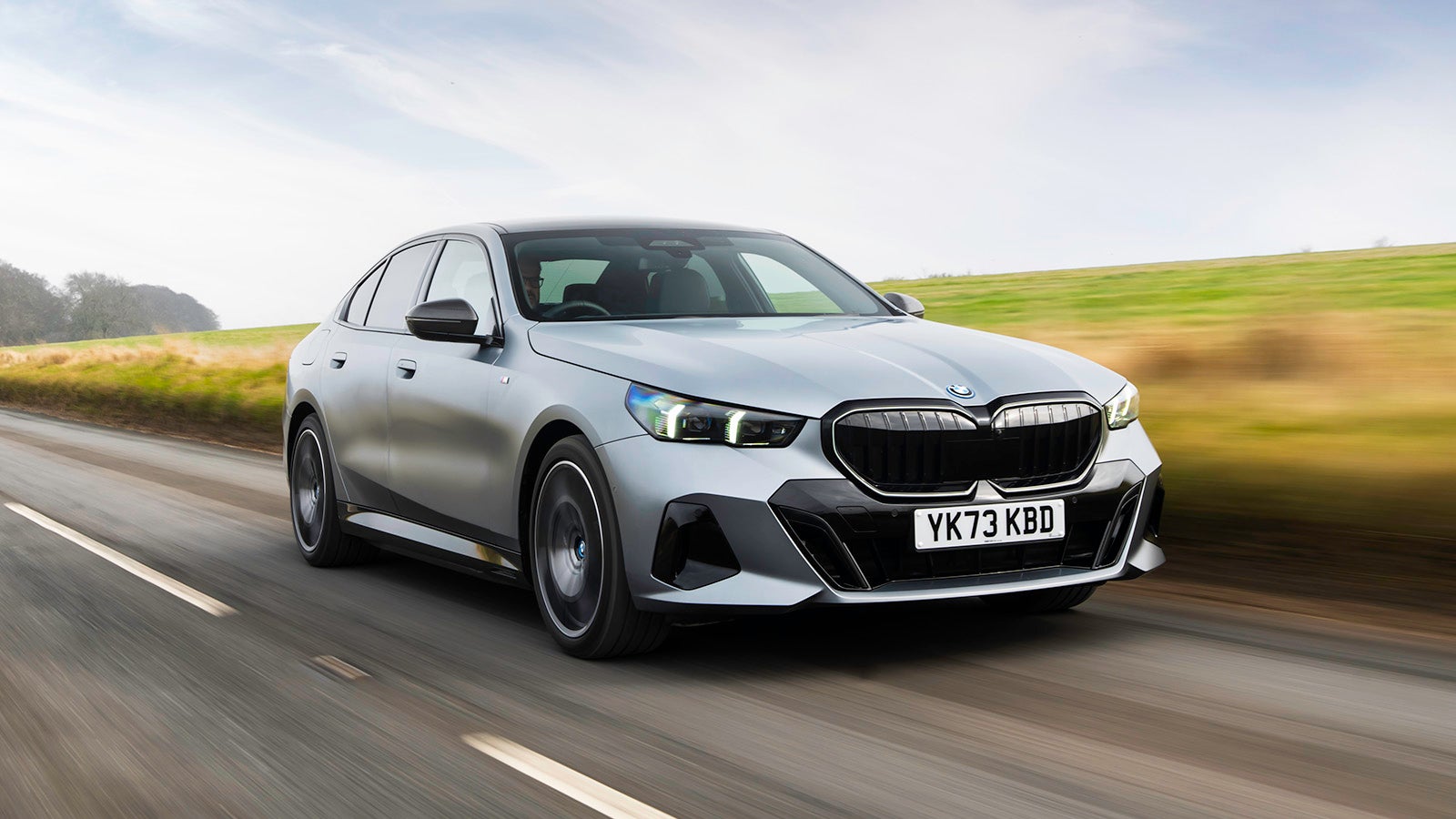
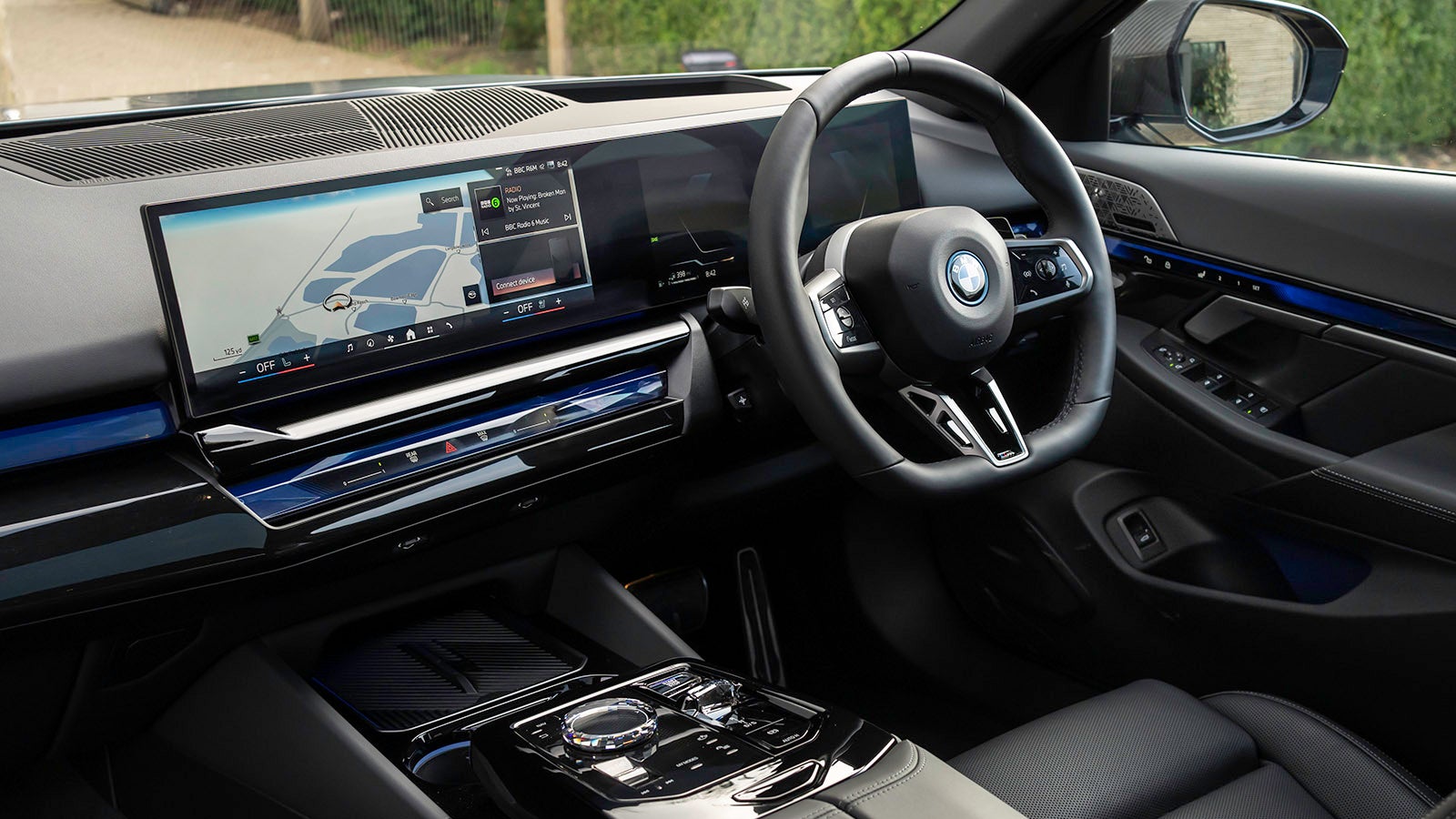
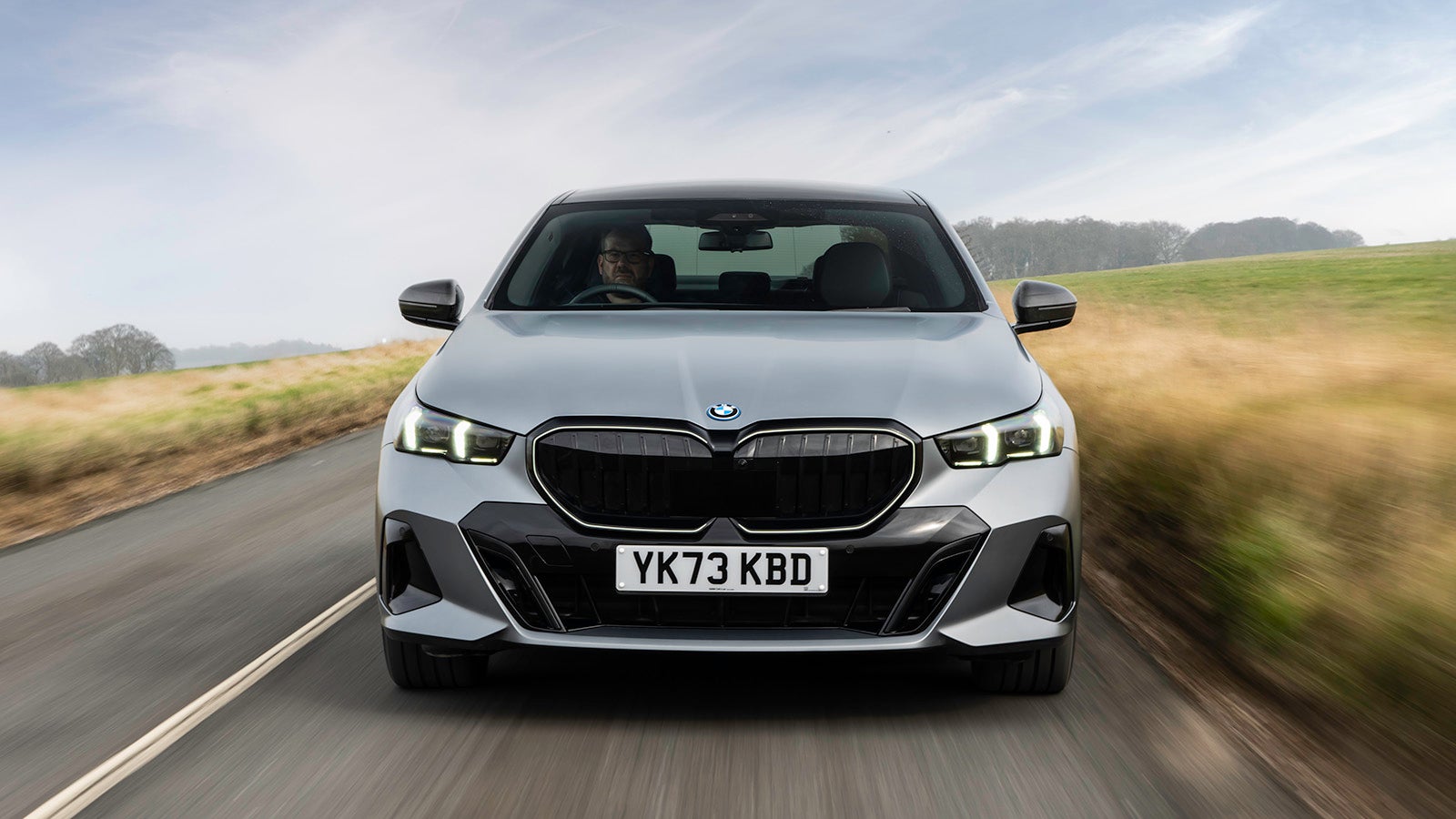


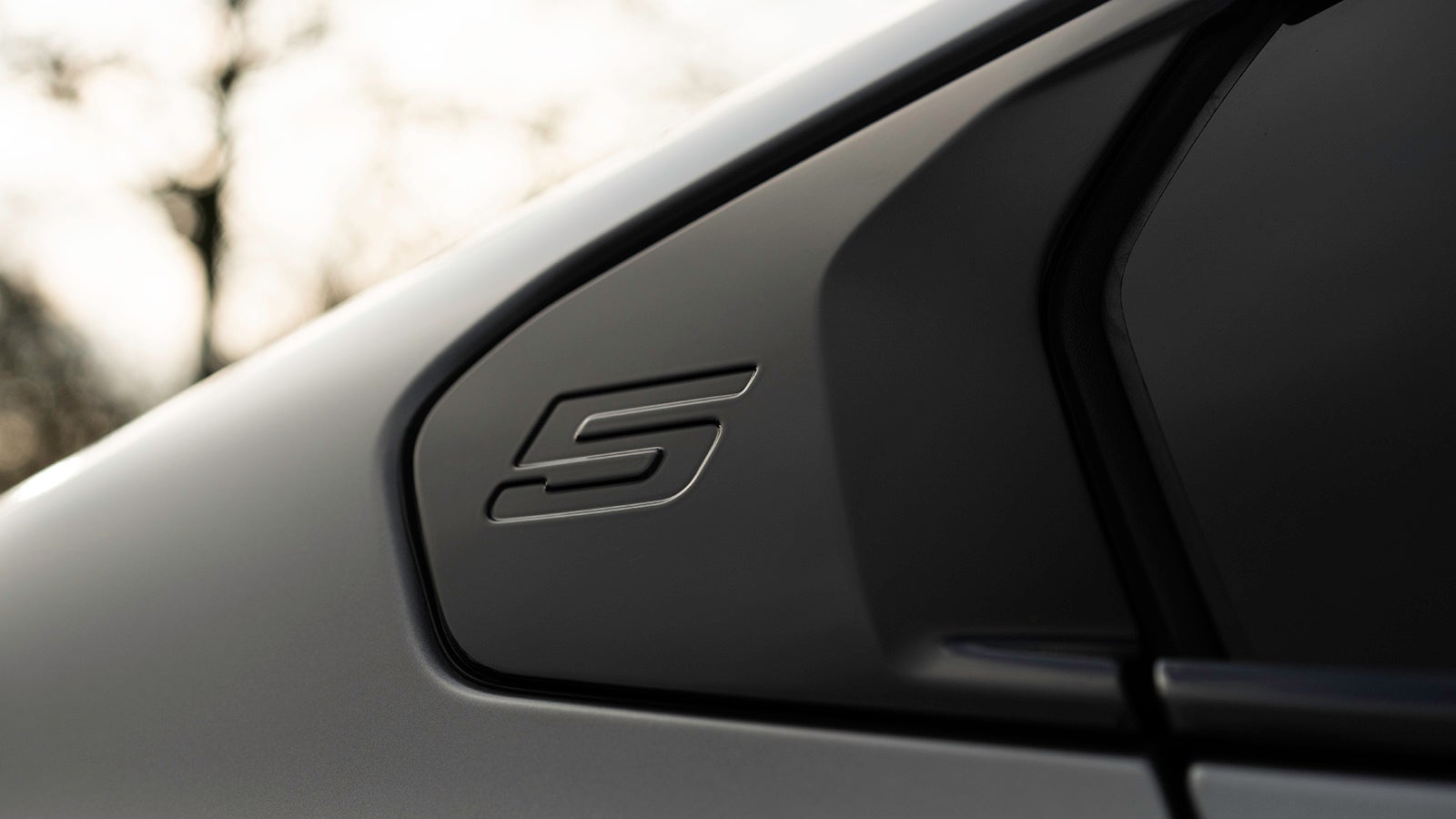
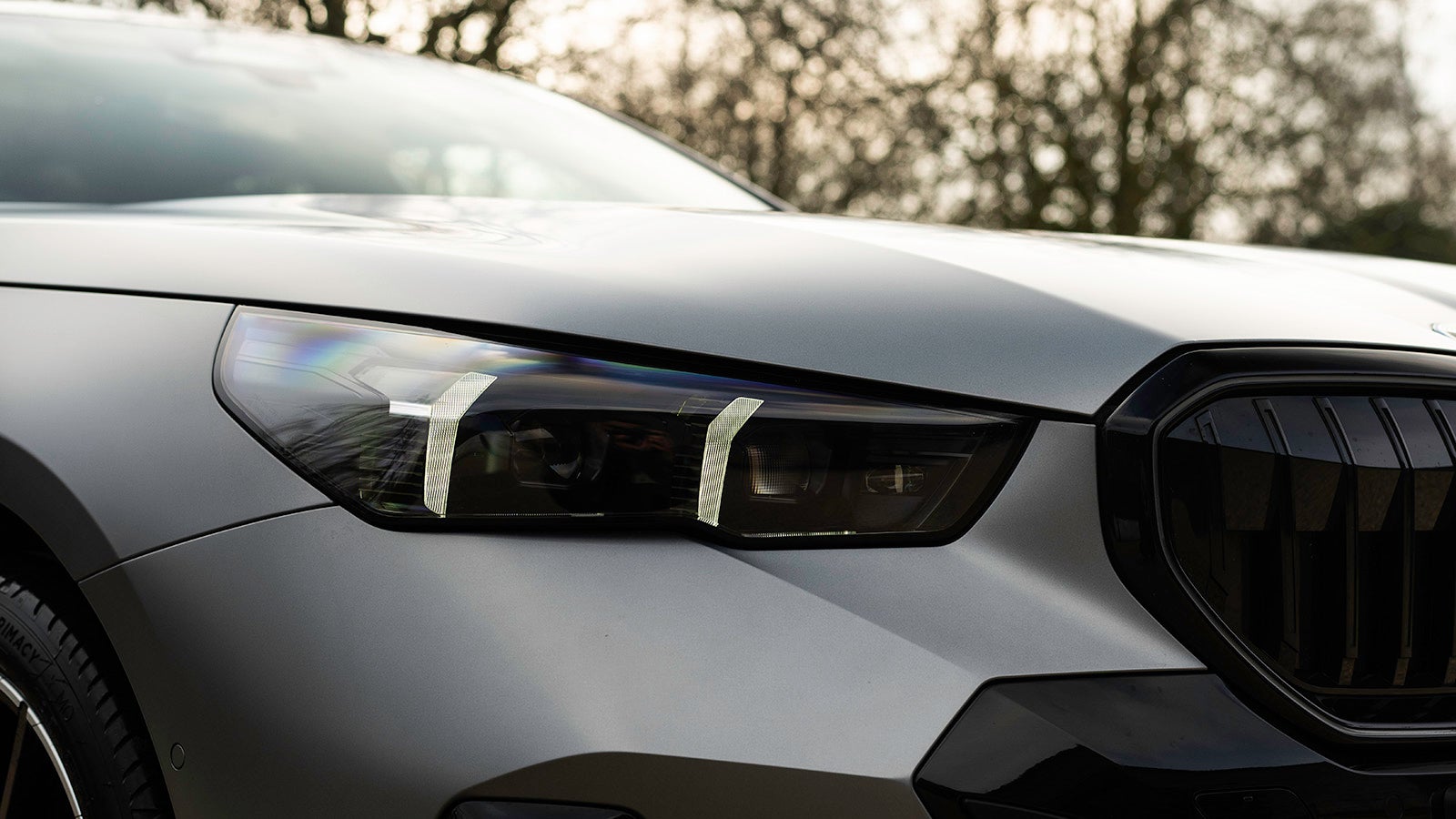
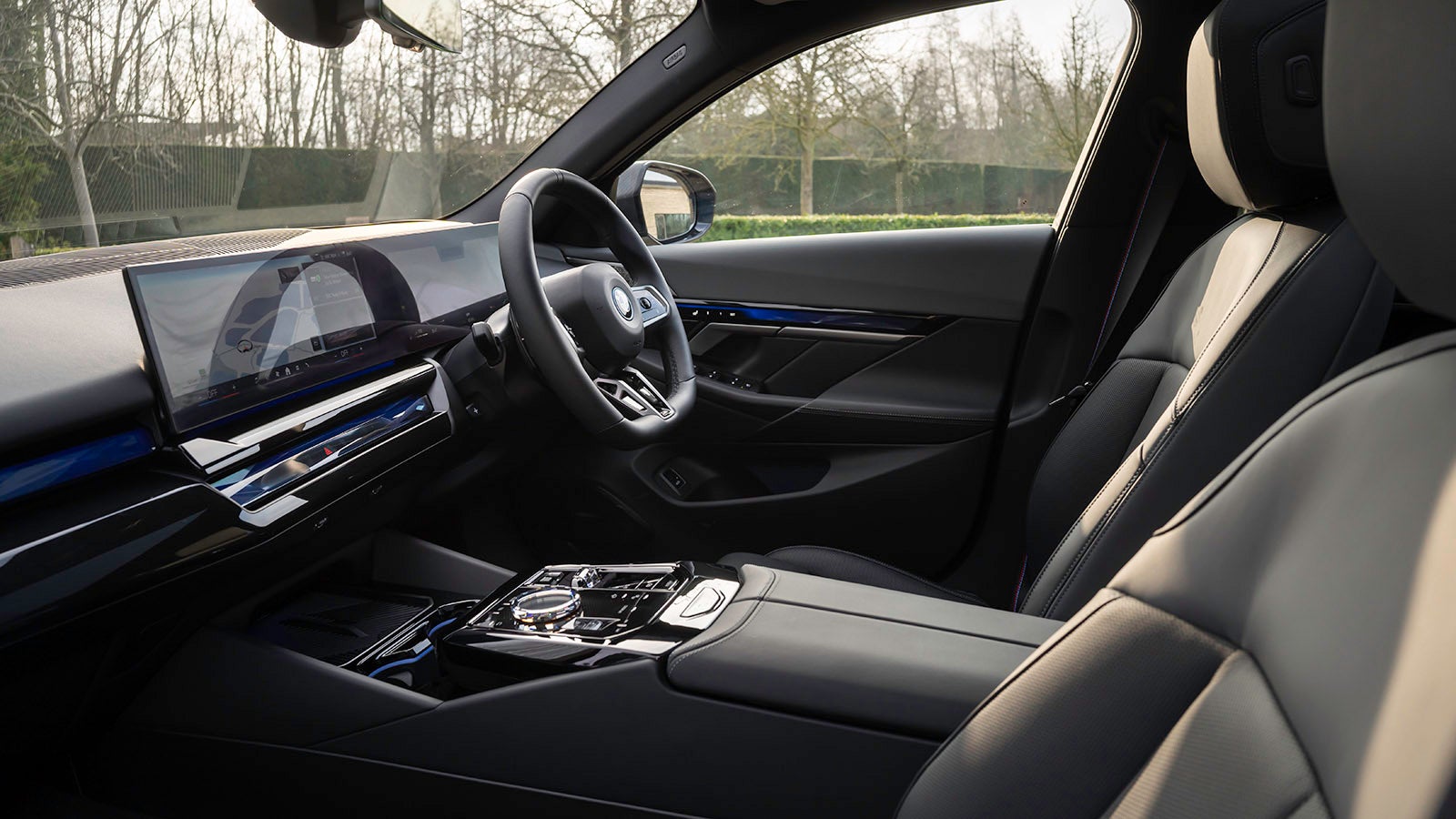





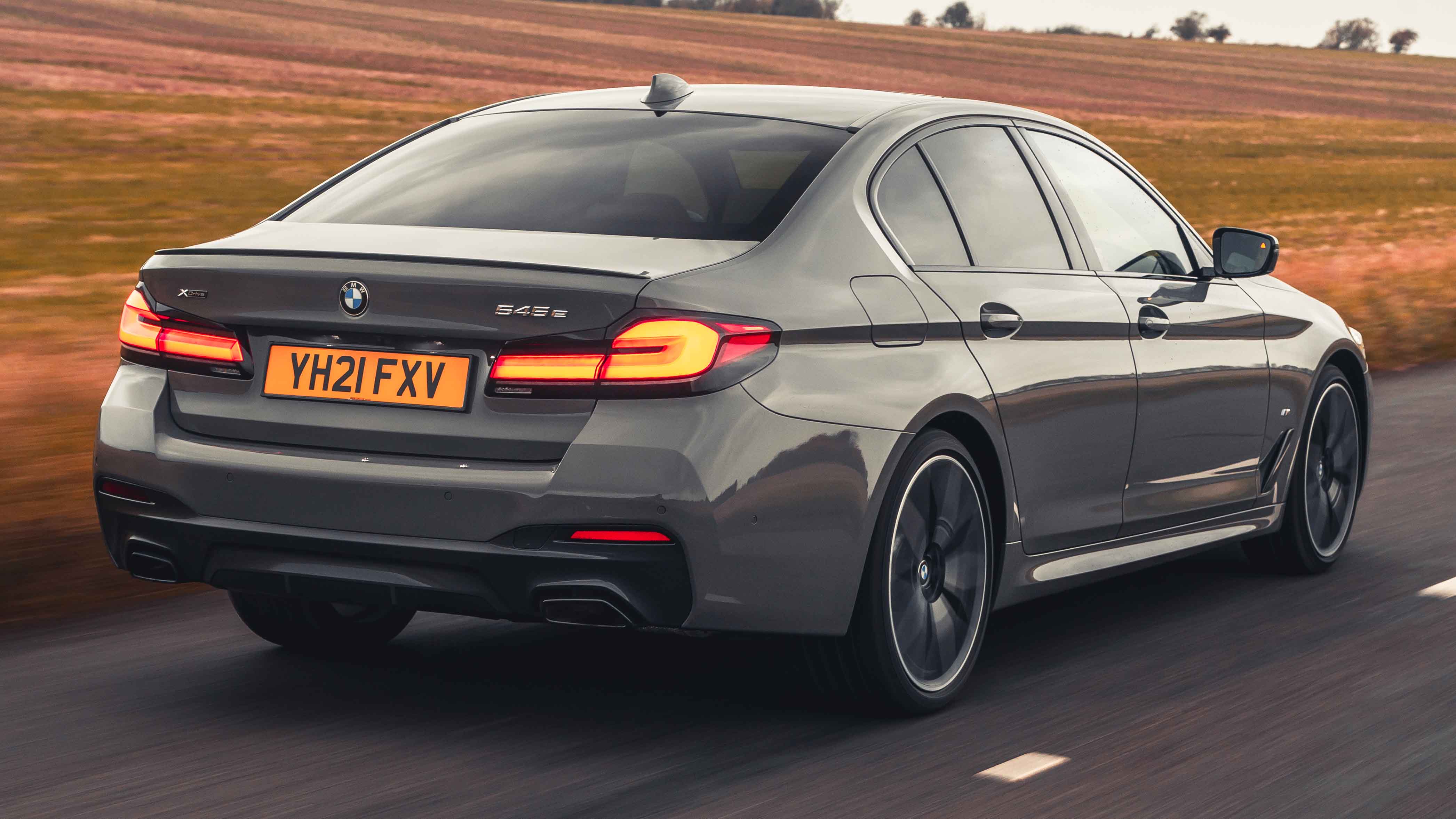
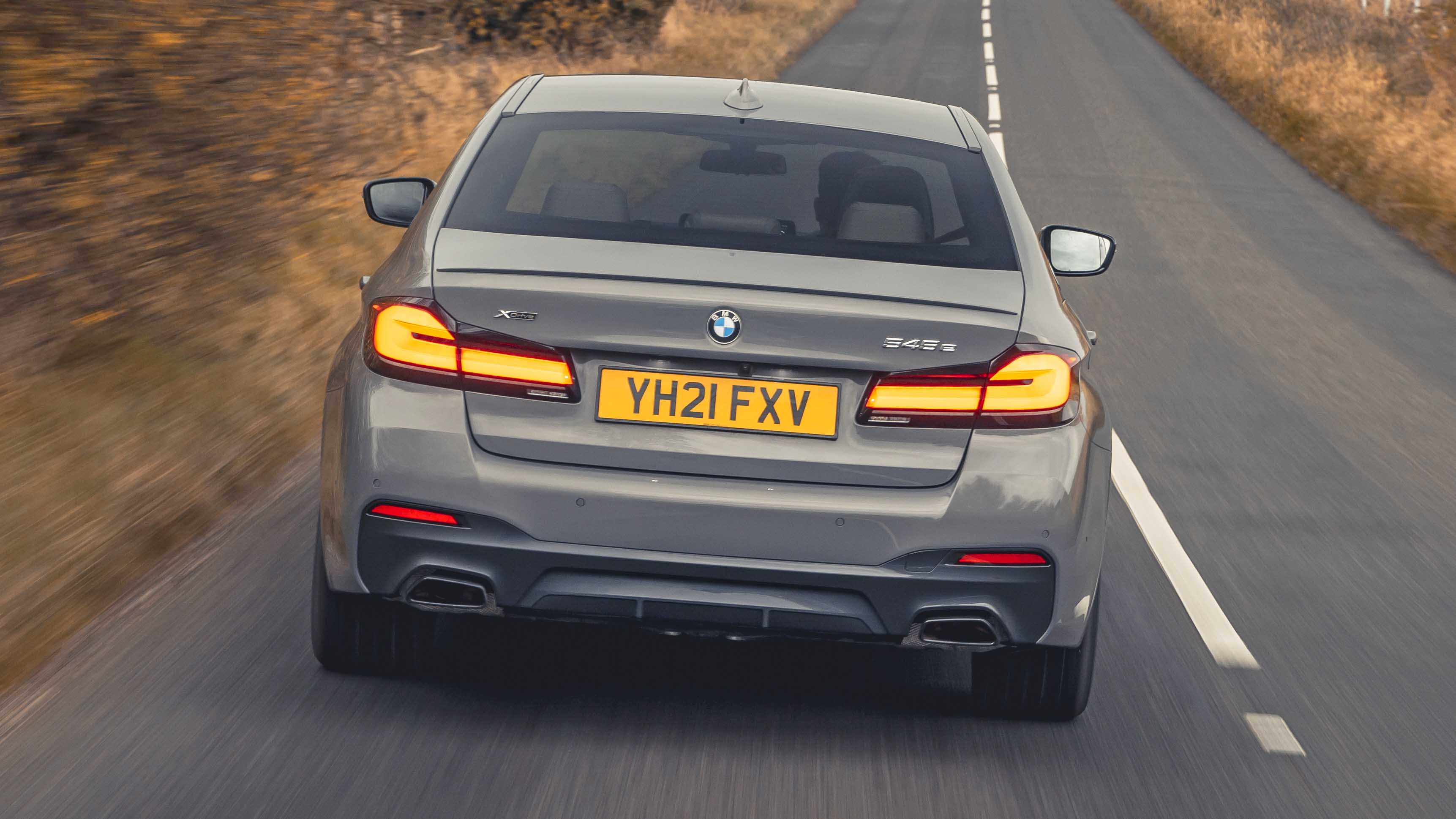



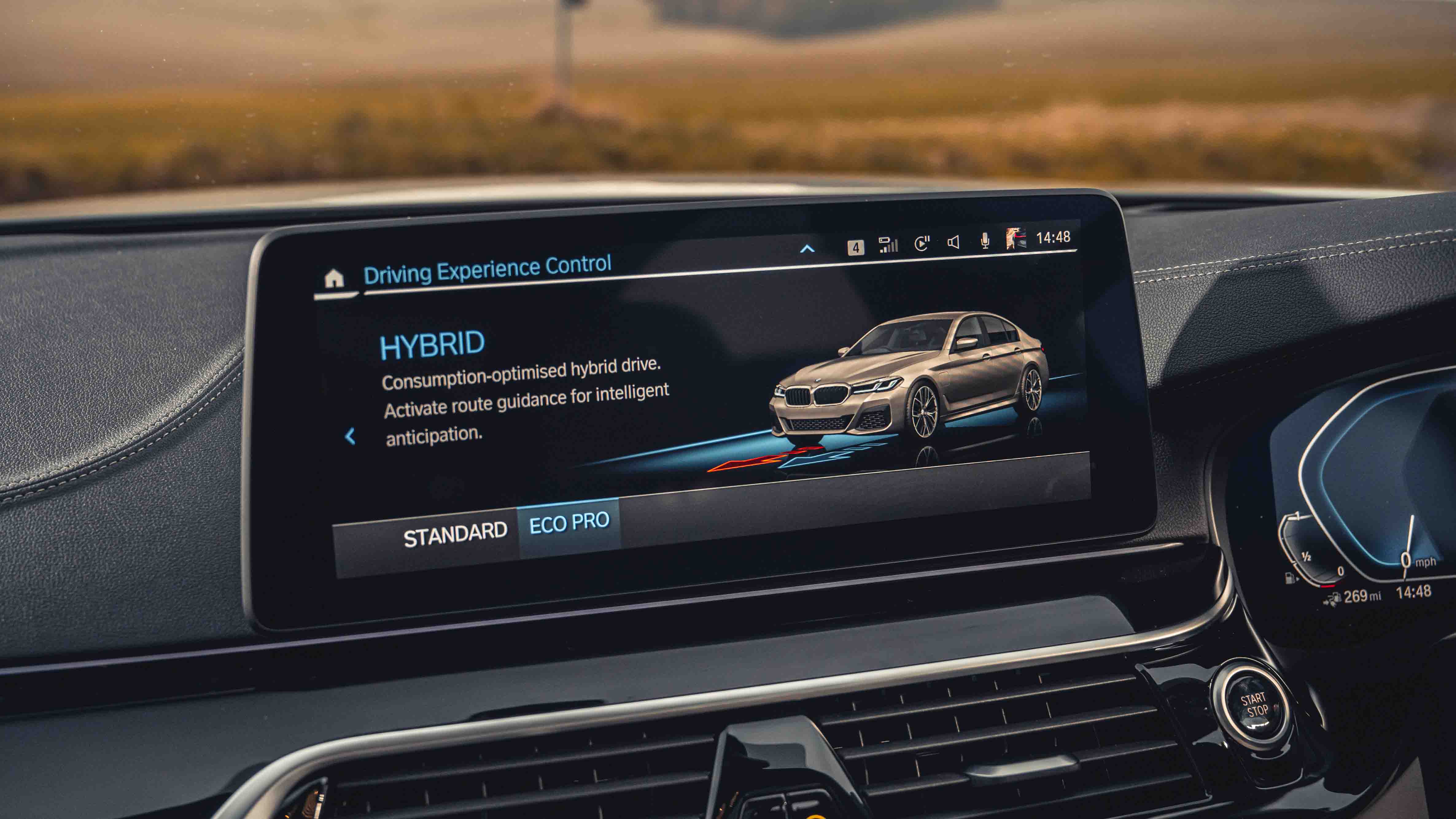
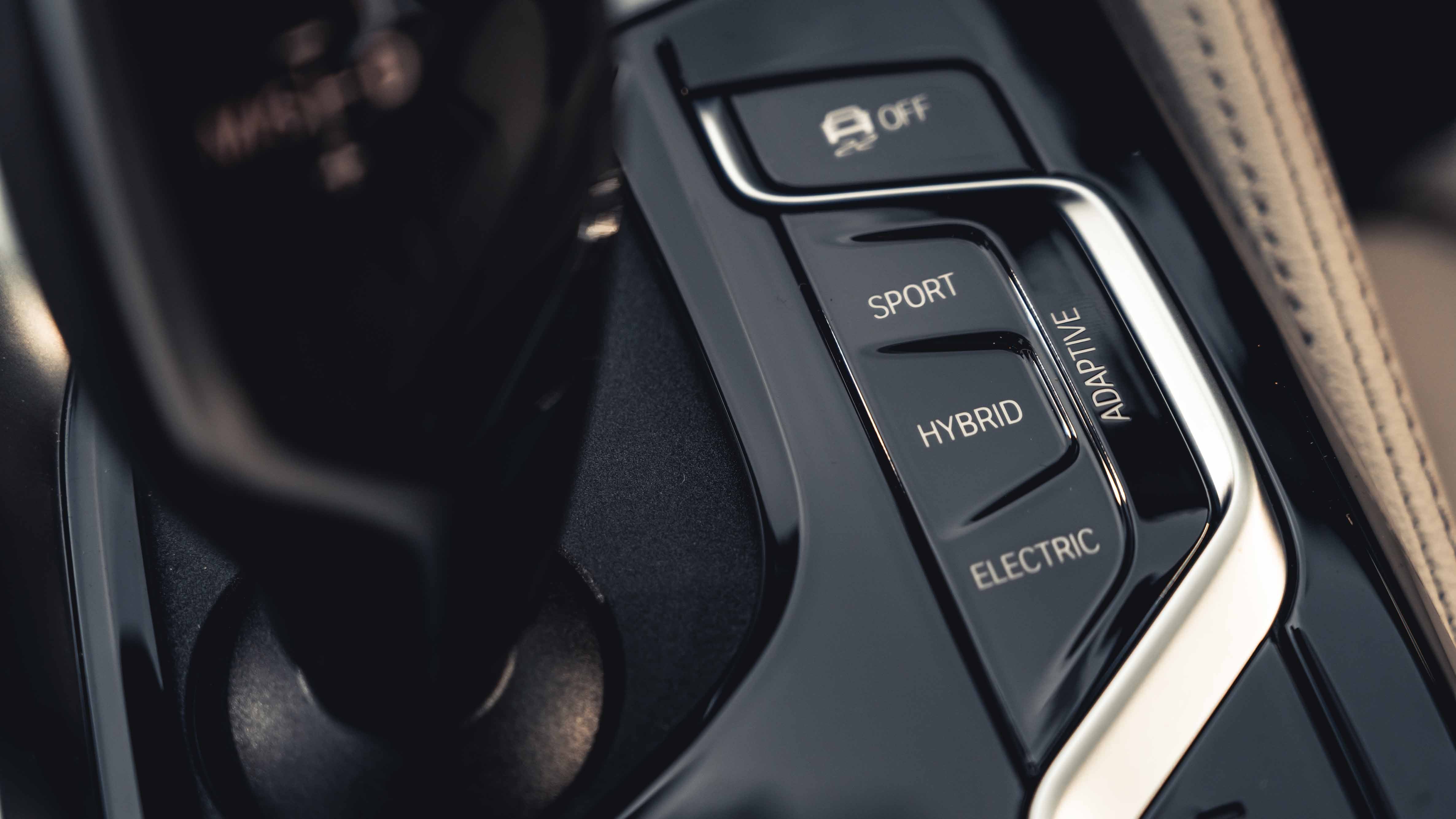
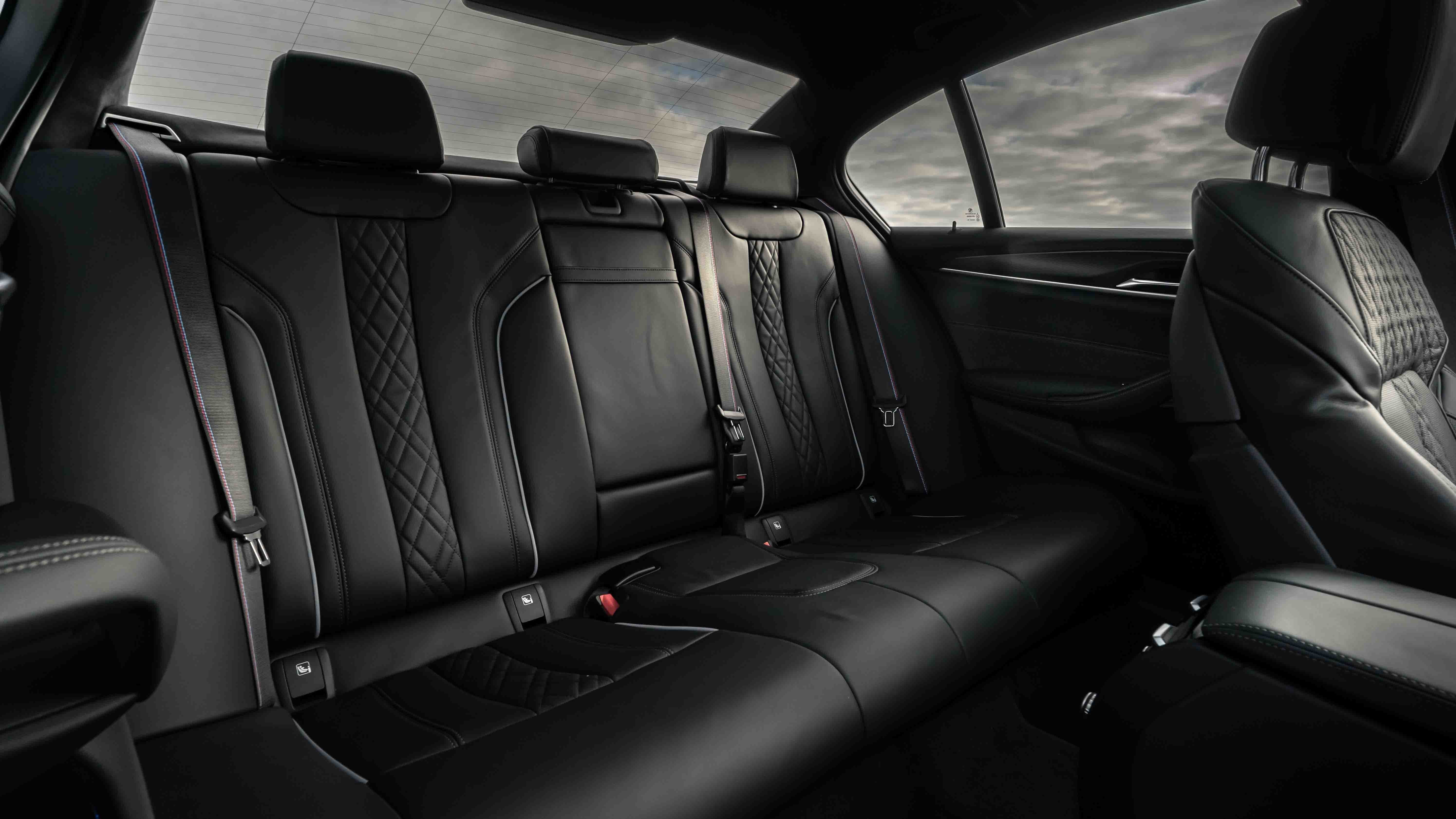
BMW 5 Series Review

With each new BMW 5 Series generation, the brand has subtly and carefully updated the formula. That is, until this model – known as the G60 to BMW enthusiasts.
This car wants to shake up the recipe with angular styling, a modern, tech-heavy cabin, and a more mature driving experience. Read on to find out whether the new model pulls it off.
- Smooth and easy to drive
- Modern cabin design
- Lots of standard equipment
- Not as fun as older 5 Series cars
- Over-reliant on screens
- No diesel options in the UK
Should I buy a BMW 5 Series?
For many years, BMW's design brief each time it wanted to replace the 5 Series was 'more of the same'. That's how the model built a cast-iron reputation as the executive car if you wanted something premium and spacious that was also fun to drive on a twisty road.
The latest 5 Series, however, feels like a big shakeup in comparison. From the outside, you'll spot BMW's latest styling language – itself a significant departure from the brand's established 'look'. The brand's 'kidney' front grilles are bigger and broader than ever, giving the front end an upright stance, while the headlights either side are more triangular.

It's the surfacing that's changed most significantly, however. Gone is the muscular sculpting that gave the last 5 Series its profile. In its place is a simplified, more geometric look, with body panels that seem to have been finished with a hand plane. This means the car's side is now defined by long, sharp creases that run from the headlights to the brake lights.
The rear end is also flattened out a little, with thin rear light clusters that seem to blend into the boot lid rather than sitting recessed into it. You'll spot a small diffuser sculpted into the bottom of the rear bumper that's part of the body kit M Sport cars get as standard. M Sport trim is the most affordable version available in the UK – lesser SE and Sport cars aren't offered here – so all British 5 Series models will have this feature.

Like the outside, the 5 Series' inside has also been completely redesigned. As is the fashion now, BMW has ditched many of the buttons from the interior, with most main functions handled by the wide dual-screen infotainment unit mounted on top of the dashboard. You'll also spot what BMW's calling the 'interaction bar' – essentially a thin screen that appears to stretch from the door panel, across the dashboard, beneath the infotainment system, and onto the other door. The bar lights up with colourful graphics when you make settings changes, adjust the drive mode or to double down on ADAS safety alerts.
No one's going to be surprised to find the 5 Series is an expensive car. With brand-new prices starting from just north of £50,000, it's costlier than rivals like the Audi A6 and Lexus ES, as well as the recently discontinued Volvo S90. It does manage to undercut the Mercedes E-Class, however, and with strong residual values, the 5 Series should represent slightly better value if you're buying on finance. Of course, buying a used BMW 5 Series that's just a year old can dramatically reduce the amount you have to pay.
Interior and technology

The new cabin is perhaps the most obvious part of the 5 Series' overhaul. BMW has fully thrown its weight behind its screen technology, and this is the defining feature of the cabin once you step inside. You can't miss the main dual-screen unit that sweeps from the middle of the dashboard to behind the steering wheel, but it's the colourful interaction bar below it that really marks out this generation of BMW interiors.
What about the bits that aren't screens? Starting with the dashboard, there's a wide strip of textured aluminium that stretches the car's full width – this feels pleasantly cold to the touch. Elsewhere, there's a big mix of faux-leather trimming and black plastic panelling lower down. While we can't criticise the build quality – there's none of the creaking you'd find in Mercedes models of a few years ago, for example – these materials don't always feel great in the hand, with spots like the door panels and upper dash coming across a little firm and unforgiving. The standard 'Veganza' faux-leather upholstery is decent, at least, and feels like an improvement over the grainy leather BMW used to include.

By many objective measures, the 5 Series' screen setup is impressive. The displays themselves are ultra-sharp, with iPad-like colour richness and glossy, modern graphics. You'll also find a wireless phone charging spot in the centre console that works well with the standard-fit Apple CarPlay and Android Auto connectivity. Responsiveness to inputs is lightning quick, too, and BMW still fits a handy rotary controller between the front seats that makes it easier to adjust settings with just a glance at the screen. Find out what happened when we used science to test how distracting modern car interiors are.
Despite its qualities, however, the screen has some annoying features. For one, BMW has fallen into a similar trap as Mercedes by building excessively fussy graphics into the screen setup. This means there are a lot of different icons, buttons and fonts all competing for your visual attention, which makes it harder to pick out the feature you actually want. We also found it a bit of a pain to adjust climate settings through the screens, with too many taps needed to turn on the heated seats, for example. There's an app menu that lets you scroll through all the screen's functions in one big grid – this layout would be irritating in a smartphone, taking time to hunt down the option you're looking for, but it's nearly unforgivable in a car where you need to find features with a quick tap.
Practicality

Since its conception, the whole point of the 5 Series was to offer a 'BMW' driving experience in a package that was large enough to carry adults in both the front and back rows. Compared to its smaller 3 Series sibling, however, the 5 Series has a little more focus on the rear passengers, offering them not just 'enough' room, but plentiful space to stretch out, making longer journeys less tiresome.
Measuring in at more than five metres long, the 5 Series offers a generous amount of legroom in both the front and rear rows. You can readily seat one six-footer behind another with no compromise needed between the two passengers. Rear headroom isn't quite so generous, however, so very tall rear passengers might find their heads brush the headliner if they sit bolt upright. Thankfully, the plentiful legroom means your lofty friends can simply slouch a little to fit, although they'll probably still be happier in a taller SUV like the BMW X5.

Cargo space in four-door saloons is always a little compromised by the car's layout. Nevertheless, the 520-litre space is quite long and fairly wide, so a couple of suitcases, a pushchair or a big shopping trip shouldn't pose a challenge. What'll be trickier is actually loading items into the boot, as the 5 Series has a proper saloon-style boot lid that lifts independently of the rear window, which means the boot opening isn't the widest.
You can always step up to the 5 Series Touring estate. This gets a modest cargo boost to 570 litres, but this figure only measures to the parcel shelf and doesn't account for the Touring's extra carrying space if you load to the roof. You'll also get a more useful hatchback-style boot lid on the Touring model, which makes it easier to load bulky cargo. However, unlike the previous 5 estate, the rear window can't be opened separately to the rest of the tailgate.
Engines and performance

The big shock in the new 5 Series' engine lineup is the lack of diesel choices. These are available on the continent but UK buyers can only pick from petrol, plug-in hybrid or full electric power under the bonnet. Our test car was a basic 520i petrol – a 2.0-litre, four-cylinder turbo that makes 208hp, powering the rear wheels through a standard-fit eight-speed automatic gearbox.
Despite its entry-level positioning, most buyers will get on just fine with this engine. Pay attention and you'll detect a hint of mild-hybrid assistance when pulling away as the petrol engine gets spun up to speed. You sense there isn't quite as much low-down grunt as older diesel 5 Series models, but you never feel like the car is straining to get its mass moving. Once off the line, the petrol pulls smoothly all the way to fast motorway speeds without complaint, with the auto gearbox smartly swapping or holding gears as the situation demands.

The official 0-62mph time is 7.5 seconds and the car feels every bit that fast when you lean on the throttle. However, hard acceleration does reward you with a slightly gruff roar from under the bonnet, making the 520i a better car to cruise about in than to drive fast. Similarly, taking control of the gears via the steering-wheel paddles does little to make the driving experience more exciting. There's a noticeable delay between pulling a paddle and the 'box actually shifting, which blunts your sense of engagement.
Despite the 520i's plentiful weight and horsepower, BMW reckons you'll be able to return more than 40mpg on average. Those stats and its lower purchase price means this is probably the best choice for private buyers. Company car buyers, on the other hand, might want to take a look at the 5 Series' other engine choices, including the 530e and 550e plug-in hybrids – each with three-figure mpg numbers – or the fully electric i5 that can return more than 300 miles on a full charge.
Driving and comfort

As you'll read in our review of the previous-generation BMW 5 Series, it was probably the most dynamically impressive car in the class – blending a direct, sporty driving experience, with mature, well-judged body control. Sadly, the latest model doesn't quite reach the old car's high bar. It delivers a generally similar experience from behind the wheel – stable, composed handling that makes the car easy and predictable, backed up by a responsive engine with enough power to make light work of the car's substantial weight.
However, where the old 5 Series was properly good fun on the right road, the new one doesn't seem to enjoy being hustled. You sense there's a bit more weight being supported by the car's wheels, which shows itself as a little extra wobble during direction changes or mid-corner steering adjustments. As a result, the front end doesn't have the same supremely planted feeling that the old car achieved. This isn't helped by the overly light steering, which doesn't feel anywhere near as connected as BMWs of old.

Ride quality is generally good – perhaps even a touch softer than the outgoing 5 Series, although you'd really have to pay attention to notice. Like most BMWs, bumps are absorbed rather than masked completely. You'll feel the impact and hear a thud through the suspension, but enough of the harshness is tuned out that the car isn't tiring on long journeys. Refinement is also impressive as long as you avoid gunning the 520i's slightly gruff engine. However, if outright comfort is the most important factor, the Audi A6 and Mercedes E-Class are just a fraction softer still.
Finally, no one could accuse the previous 5 Series of being small – it was a big car and it felt like it from behind the wheel. The new model, however, has grown further by a few millimetres in every dimension, and you really have to be aware of every inch if you try to weave through tight urban streets. It's longer than most regular parking spaces, so you'll have to be tactical about where you park the big BMW. The standard-fit parking sensors and reversing camera certainly come in handy during tight manoeuvres – although we found the rear emergency braking function to be overly sensitive when parking in a narrow space.




























































